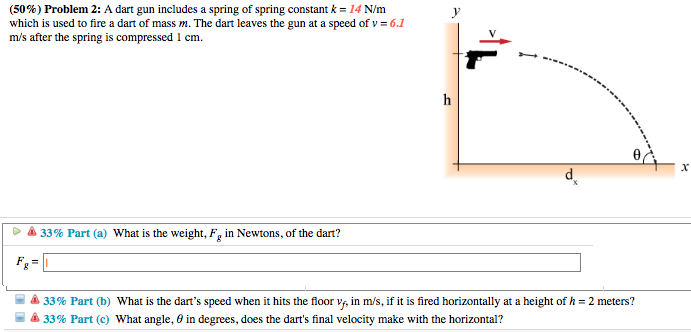A dart gun includes a spring of spring constant k = 14 N/m which is used to fire a dart of mass m. The dart leaves the gun at a speed of v = 6.1 m/s after the spring is compressed 1 cm. 33% Part (a) What is the weight, Fg in Newtons, of the dart? Fg = Part (b) What is the dart's speed when it hits the floor vf, in m/s, if it is fired horizontally at a height of h = 2 meters? Part (c) What angle, θ in degrees, does the dart's final velocity make with the horizontal?
